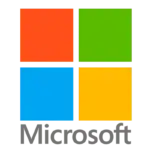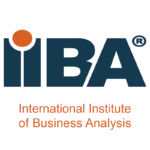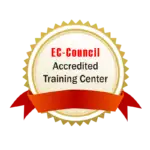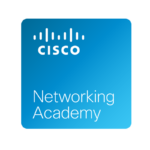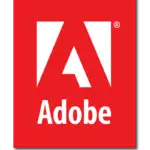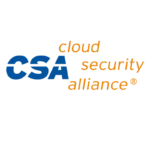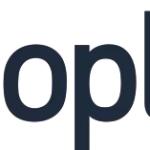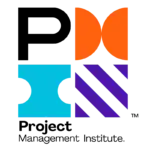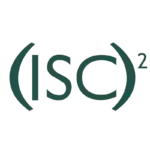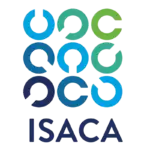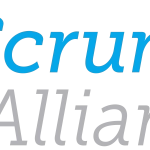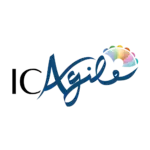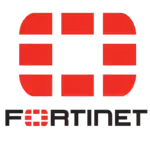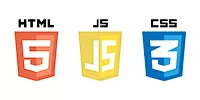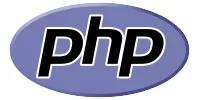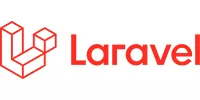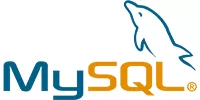- Courses
 Business Management
Business Management IT Networks and ITSM
IT Networks and ITSM Data Management
Data Management Information Security
Information Security Software Development
Software Development Digital Transformation
Digital Transformation Graphic Design
Graphic Design
- Career Paths
- Vendors
PHP Full Stalk Developer Career Path
Transform ideas into powerful applications become a master of full-stack development!
In Collaboration With industry experts







Overview
The U.S. Bureau of Labor Statistics projects a 15% increase in web development jobs, including PHP roles, by 2026, which is more than double the average growth rate for all occupations.
Full-stack developers, encompassing PHP expertise, are expected to see a 22% job growth from 2020 to 2030 in the U.S.
Mastering PHP Full Stack Development opens doors to exciting career opportunities in web development.
With the power to build complete, dynamic websites and applications, you become a highly sought-after developer in today’s digital world.
Why Choose PHP Full Stack Development?
- High Demand & Career Growth – Companies worldwide need skilled developers who can handle both front-end and back-end development.
- Versatile Skillset – Learn to design responsive interfaces, manage databases, and build powerful web applications using PHP, MySQL, JavaScript, and Laravel.
- Job Flexibility – Work full-time, freelance, or remotely, creating opportunities to work with global clients.
What You’ll Learn:
- Front-End Development – Craft stunning, interactive user experiences with HTML, CSS, and JavaScript.
- Back-End Development – Master PHP & Laravel to build robust, data-driven applications.
- Database Management – Learn MySQL to store, retrieve, and manage data efficiently.
Gain the skills to become a job-ready PHP Full Stack Developer and bring your ideas to life with real-world projects. The future of web development is in your hands—begin your learning journey now!
Create a Job-Ready Project Portfolio
With personalized support, hands-on labs, and a curriculum tailored to real-world scenarios, you’ll be ready to take on complex challenges and boost your career prospects.
+140 hours of extensive learning
Gain in-depth knowledge through a mix of instructor-led sessions and hands-on exercises.
Practical Workshops Sessions
Gain hands-on experience with tools and techniques in interactive workshops.
Certification with Credibility
Showcase your skills with a accregated certificate to enhance your professional profile
Industry-Relevant Curriculum
Learn practical tools and techniques tailored to solve real-world business challenges.
10% OFF For Limited Time
Career Opportunities for PHP Full Stalk Developer
Graduates of the PHP Full Stack Developer track can pursue roles like Full Stack Developer, Web Developer, Back-End Developer, or Laravel Developer in industries such as tech, e-commerce, and finance. With skills for full-time, part-time, or freelance work, they are ready to build the future of the web! 🚀
Graduates of CLS Learning Solutions’ PHP Full Stack Developer track are equipped for a wide range of web development roles, including:
- Full Stack Developer – Builds and maintains both front-end and back-end components of web applications.
- Back-End Developer – Develops server-side logic, databases, and APIs using PHP and MySQL.
- Front-End Developer – Creates responsive, interactive user interfaces with HTML, CSS, and JavaScript.
- Web Developer – Designs, develops, and optimizes dynamic websites and web applications.
- Laravel Developer – Specializes in building scalable applications using the Laravel framework.
- Software Engineer – Develops robust, high-performance web solutions for various industries.
With these in-demand skills, graduates can pursue full-time, freelance, or remote opportunities in the fast-growing tech industry!
Our Graduates' Success Stories
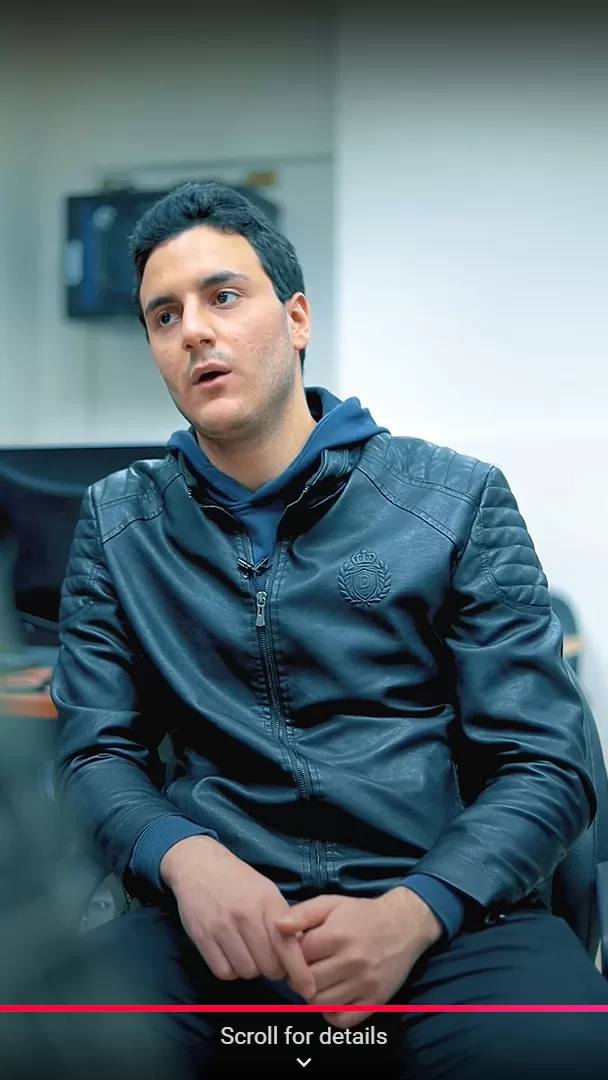
Omar Omad Eldin

Mohamed Alaa

Group of our Grads
Why Learn from CLS?
Years of Experience
Since 1995, we’ve been a trusted training partner, helping individuals and organizations achieve their goals.
Expert Instructors
Learn from with top experts in the industry guranteed and get career assistance and coaching.
Hands-On Learning
Our courses are designed with real-world projects and practical applications.
What you will learn in this career path?
- Module 1: Introduction to Programming with PHP
- Module 2: PHP Syntax and Fundamentals
- Module 3: Variables and Data Types
- Module 4: Control Structures
- Conditional Statements
- Loops and Iteration
- Module 5: Functions in PHP
- Module 6: Object-Oriented Programming Basics
By the end of this course, learners will be able to:
- Understand fundamental programming concepts and the core principles of PHP.
- Work with variables, data types, and control structures to build dynamic applications.
- Implement conditional logic using if statements, switch cases, and nested conditions.
- Utilize loops (for, while, do-while) to manage repetitive tasks efficiently.
- Create and use functions, including parameterized functions and those with return values.
- Apply object-oriented programming (OOP) concepts using classes, properties, constructors, and destructors.
- Develop structured and reusable PHP code for real-world applications.
- Module 1: Advanced Object-Oriented Programming in PHP
- Module 2: Data Structures in PHP
- Module 3: PHP Collections with Generics (Workarounds using arrays and type checks)
- Module 4: Multithreading and Parallel Processing (Conceptual & Practical Introduction)
- Module 5: Introduction to PHP Framework Concepts
By the end of this course, learners will be able to:
- Apply Object-Oriented Programming (OOP) principles in PHP development.
- Utilize encapsulation, abstraction, and polymorphism to build modular and maintainable code.
- Work with interfaces, abstract classes, virtual functions, and function overloading.
- Implement data structures such as arrays, lists, sorted lists, stacks, and queues.
- Understand threading concepts for efficient program execution.
- Explore Framework.NET and its integration with PHP applications.
- Module 1: Introduction to HTML5
- Module 2: CSS3 Styling Fundamentals
- Module 3: Advanced CSS Layout & Design
- Module 4: Real-World Web Layouts
By the end of this course, learners will be able to:
- Structure web pages using HTML5 elements, including text formatting, links, media, tables, and forms.
- Enhance page layout with semantic elements like sections, articles, headers, and navigation.
- Integrate media content, including images, videos, audio, and embedded maps.
- Apply CSS styling, including selectors, animations, Flexbox, and Grid for responsive design.
- Develop various website layouts, such as landing pages, e-commerce, and parallax designs.
- Utilize CSS backgrounds, fonts, and media queries for adaptive and visually appealing websites.
- Module 1: Introduction to Bootstrap
- Module 2: Bootstrap Grid System
- Module 3: Core Components & UI Elements
- Module 4: Bootstrap Utilities & Helpers
- Module 5: Advanced Topics
- Module 6: Responsive Media & Final Project
By the end of this course, learners will be able to:
- Utilize the Bootstrap Grid System to create flexible and responsive layouts.
- Implement containers (fluid & fixed) for structured web design.
- Design navigation menus and enhance user experience with friendly UI components.
- Apply built-in Bootstrap classes for styling and faster development.
- Work with UI Kits to create modern and visually appealing interfaces.
- Understand CSS priority in Bootstrap and how it interacts with custom styles.
- Develop fully responsive designs using Bootstrap and media queries.
- Module 1: Introduction to JavaScript & ES6
- Module 2: Core Programming Fundamentals
- Module 3: Loops and Iterations
- Module 4: Arrays & Advanced Array Methods
- Module 5: Functions in JavaScript
- Module 6: Working with Objects and Classes
- Module 7: Built-in JavaScript Features
- Module 8: Real-World Applications
By the end of this course, learners will be able to:
- Understand the difference between client-side and server-side JavaScript.
- Work with variables, data types, and operators for effective programming.
- Utilize conditional statements and loops to control program flow.
- Perform data type conversions and handle arrays efficiently.
- Implement functions, callbacks, closures, and arrow functions for modular coding.
- Work with objects, classes, and JavaScript built-in classes like Math, Random, and Date.
- Apply string manipulations, method chaining, and sorting techniques.
- Use array methods like forEach, filter, and other advanced functions for data handling.
- Module 1: Introduction to Databases
- Module 2: Database Design Concepts
- Module 3: Normalization Techniques
- Module 4: SQL Fundamentals
- Module 5: Data Manipulation Language (DML)
- Module 6: Advanced SQL Concepts
- Module 7: Database Security and Access Control
- Module 8: Mini Project
By the end of this course, learners will be able to:
- Understand database design principles and implement MySQL databases efficiently.
- Apply object-oriented programming (OOP) concepts, including inheritance, access modifiers, overriding, and getters/setters.
- Manipulate HTML elements dynamically using JavaScript (append, add styles, hide/show, toggle, and pop-ups).
- Develop interactive web applications, including login/register systems, dark mode, image sliders, accordions, and chatboxes.
- Implement form validation, event handling (mouse/page scroll), and UI enhancements like counters and progress bars.
- Create functional web-based projects, including a website, dashboard, and notepad application.
- Module 1: Introduction to Laravel & Environment Setup
- Module 2: Laravel Basics
- Module 3: Blade Templating Engine
- Module 4: Working with Databases
- Module 5: Forms and Validation
- Module 6: Advanced Features
By the end of this course, learners will be able to:
- Set up Laravel with PHP 8.4, Composer, and Docker for a smooth development environment.
- Master routing, Blade templates, and layout inheritance for building dynamic web applications.
- Work with databases using Laravel’s Eloquent ORM, migrations, model factories, and seeders.
- Implement CRUD operations with validation, CSRF protection, and form handling.
- Enhance user experience with flash messages, pagination, Tailwind CSS, and Alpine.js.
- Optimize application performance with caching, query scopes, and aggregations.
- Build a real-world book review project with One-to-Many relationships and review functionalities.
- Implement controllers and resource controllers for structured and scalable development.
- Module 1: Introduction to RESTful API Development
- Module 2: Managing Data in API
- Module 3: Advanced API Features
- Module 4: Authorization and Policies
- Module 5: Event Handling and Task Management
- Module 6: Optimizing API Performance
By the end of this course, learners will be able to:
- Develop RESTful APIs using Laravel and test them with Postman.
- Implement data handling with validation, storage, updating, and deletion.
- Optimize API responses with resources, pagination, and relation loading.
- Secure APIs using Laravel Sanctum for authentication and authorization.
- Automate event reminders through task scheduling, notifications, and email.
- Enhance API performance with queues, throttling, and efficient data seeding.
- Module 1: Introduction to Web Hosting and Servers
- Module 2: Domains and Subdomains
- Module 3: Setting Up Formal Email Systems
- Module 4: Uploading Applications to the Server
- Module 5: Database Management and Setup on the Server
By the end of this course, learners will be able to:
- Understand hosting environments and different types of servers.
- Configure domains and subdomains for web applications.
- Set up professional email accounts for business communication.
- Deploy applications on a live server.
- Create and manage databases on the server side.
Module 1: Introduction to Figma
- Overview of Figma
- Understanding Figma’s interface and features.
- Setting up a Figma and starting a project.
- Introduction to Figma’s design components
Module 2: Collaborating in Figma
- How to collaborate with designers in Figma.
- Real-time collaboration and comments.
- Version control and managing project iterations.
- Sharing designs and prototypes.
Module 3: Inspecting Designs and Extracting Code
- How to inspect designs in Figma for responsive web development.
- Extracting CSS and design specifications.
- Understanding Figma’s code inspection features.
- Using Figma’s design tokens for consistent styling.
Module 4: Building Prototypes and Design Systems
- Creating interactive prototypes in Figma.
- Setting up and utilizing design systems for consistency.
- Understanding Figma components, variants, and reusable styles.
- Best practices for organizing and maintaining design systems.
Module 5: Exporting Assets and Working with Developers
- How to export assets from Figma
- Best practices for preparing assets for development.
- Integrating Figma designs into front-end development.
- Using Figma with version control and project management tools
By the end of this course, learners will be able to:
- Master Figma’s interface and tools, enabling efficient design and development collaboration.
- Collaborate seamlessly with designers, sharing designs and providing feedback in real-time.
- Inspect design elements, extract CSS, and gather assets needed for front-end development.
- Create responsive prototypes and understand design systems to ensure consistent design across projects.
- Export design assets for development, ensuring the proper handoff from design to code.
- Internet Access
- Basic Computer Knowledge
- Basic understanding of computer programming languages.
Boost your career with our certification
Gain industry-recognized expertise in full-stack development with our PHP Full Stack Developer career path. Master PHP, Laravel, MySQL, JavaScript, and front-end technologies to build dynamic, high-performing web applications. Stand out in the job market and unlock endless opportunities in web development!

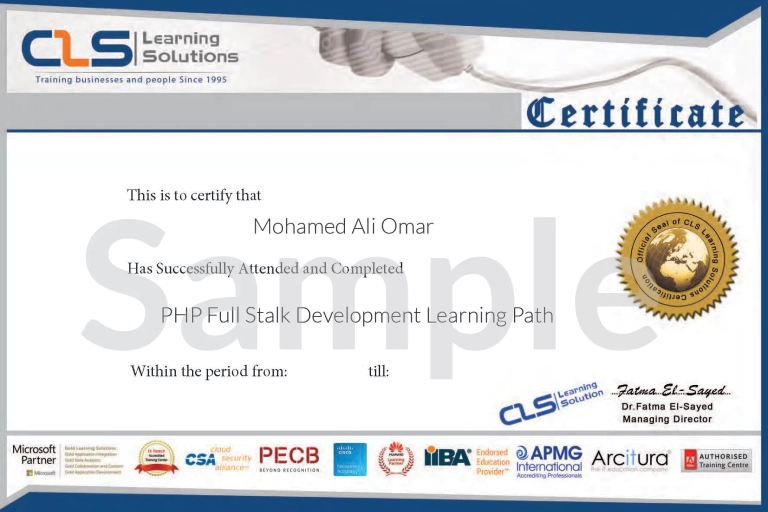
What Learners Are Saying

Nada Osman
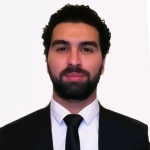
Samer Eltawansy

Amr Azab

Inaam Badawi

Muhammad Amjad Karara

Mahmoud Ibrahim

Abdelrahman Ahmed

Areej Sofy

Mohamed Saeed

Mohamed Mekkawy

Alyaa Gaber

Michael Fahmy

Mohamed Samir

Aziza moatz

Mohamed Abdel aziz

Hisham Ibrahim

Mohand Khaled
Ahmed ElGhobashy

Ahmed Mostafa Mahmoud

Mohamed Aldremly

Ahmed Elkomy

Mohamed Taha

Mohamed Hassan

Sama Aly

Ahmed Nehro
Training Locations
Our classrooms in provide an in-person learning experience with direct interaction with instructors,These locations are equipped with modern facilities that support collaboration, practical training, and focused attention
Cairo Branch
- 5 Mesaha Square , Dokki - Cairo
Giza Branch
- 5 Mesaha Square , Dokki - Cairo
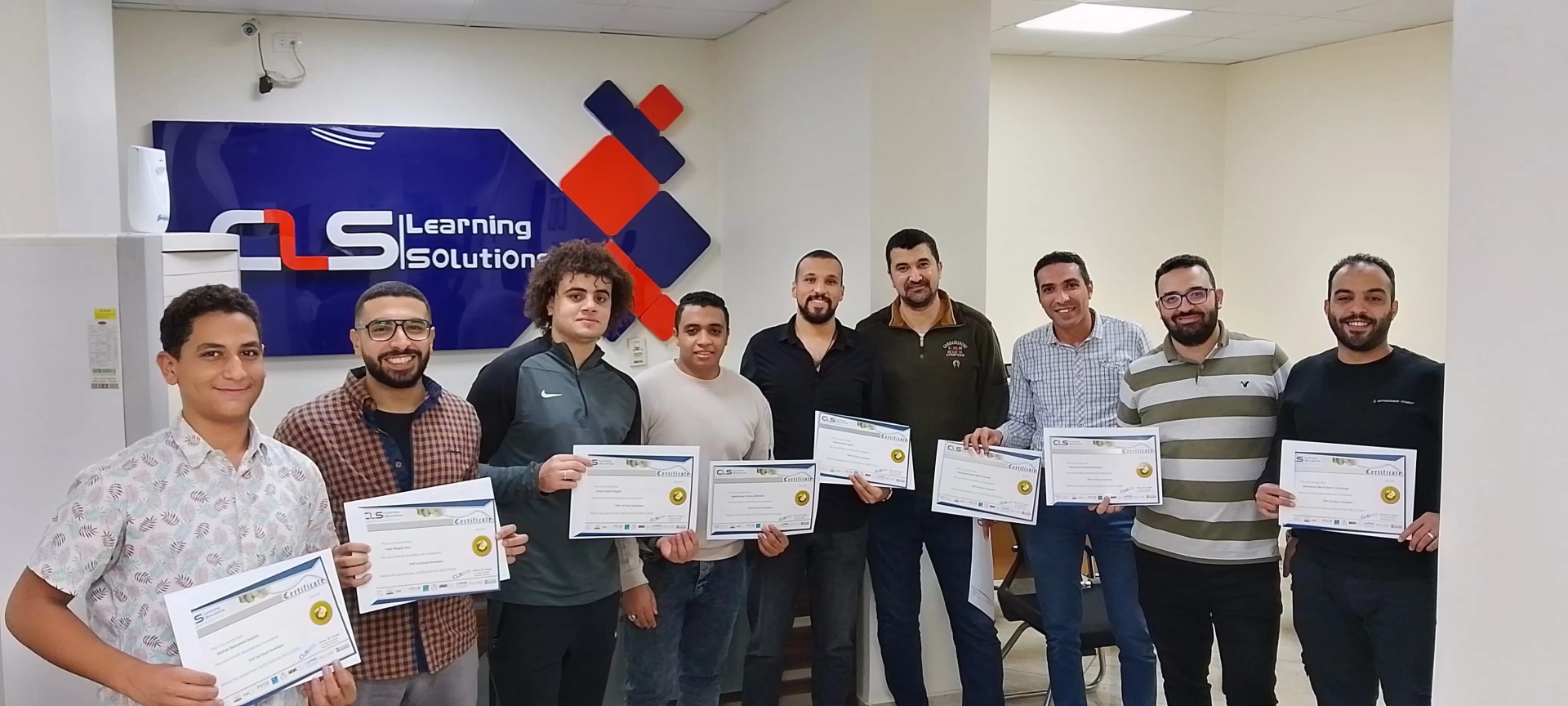

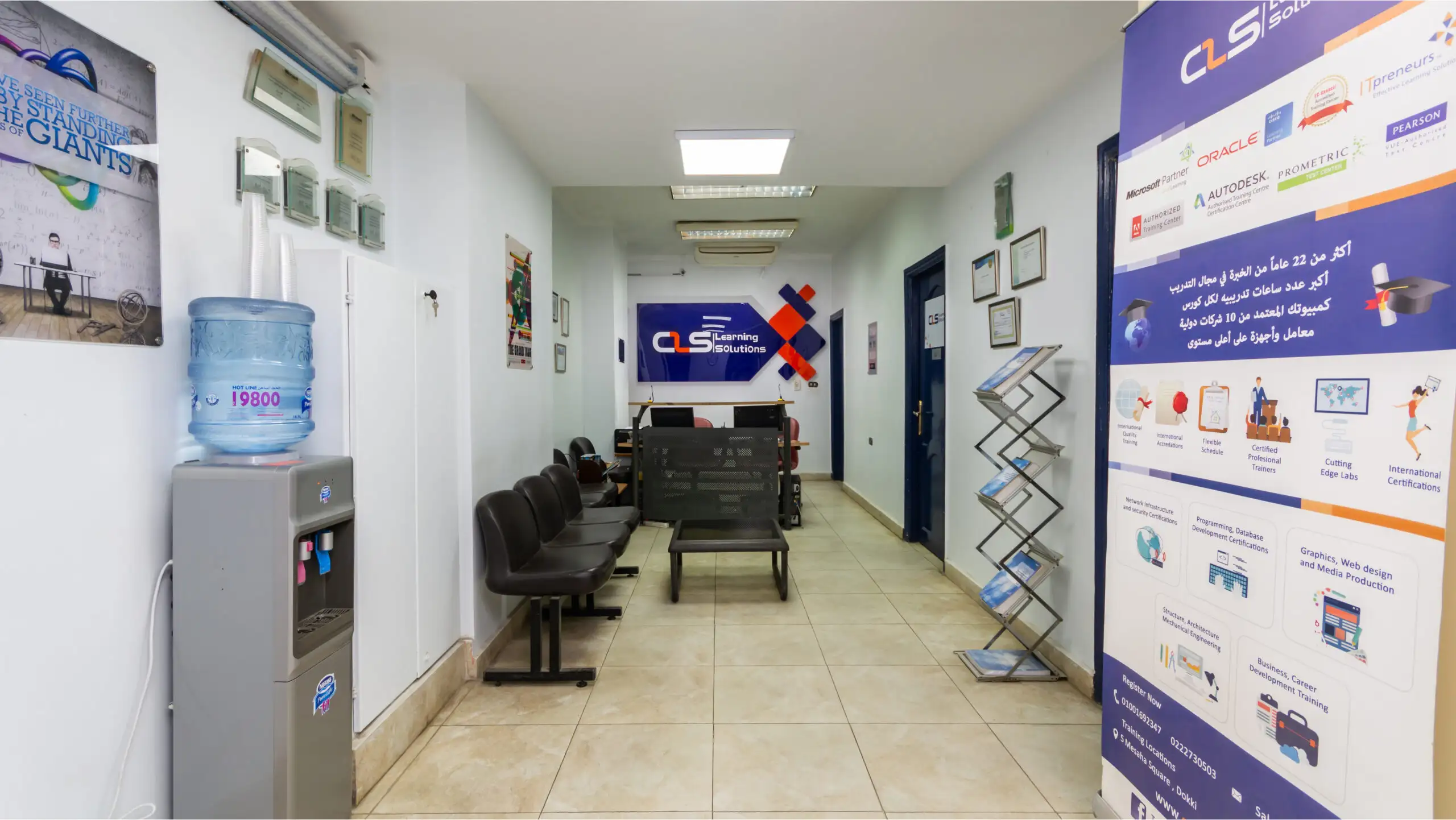
We offer two tailored virtual training formats, the Self-Paced Training to Enjoy the freedom to study anytime, anywhere and the Virtual Interactive Instructor-Led Training with flexible sessions that connect you with expert instructors in real time
Virtual Instructor-Led Training
- Live, at Programmable Hours
Self-Paced Training
- Learn Anytime, Anywhere!



We offer on-site training at your company’s premises. Tailored to your business needs, these sessions allow employees to learn without leaving the workplace.
Our expert instructors will deliver courses designed to enhance skills and drive performance, all in a familiar and comfortable environment.
- At your company’s premises


The CLS Learning Solution Advantage
Experience
We have been in the market since 1995, and we kept accumulating experience in the training business, and providing training for more than 200,000 trainees ever since, in Egypt, and the MENA region.
Premium Facilities
CLS facilities are well-equipped with strong hardware and software technologies that aid both students and trainers lead very effective smooth training programs.
Customer Support
We provide our clients with the best solutions, customized to their specific needs and goals. Our team is highly qualified to answer whatever questions you have.
Global Accredited
CLS is an authorized and accredited partner by technology leaders. This means that our training programs are of the highest quality source materials.
Up To Date
We keep tabs on every change in the market and the technology field, so our training programs will always be updated up to the World-class latest standards, and adapted to the global shape-shifting job market.
Certified Instructors
We select the best instructors, who are certified from trustworthy international vendors. They share their professional experience with the Trainees, so they can have a clear hands-on experience.
10% OFF For Limited Time
© 2025 - CLS Learning - Solutions | All Rights Reserved.


